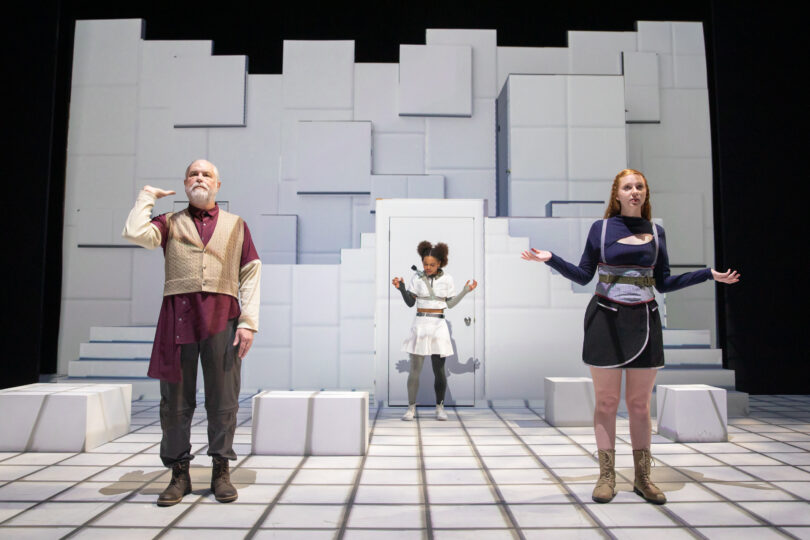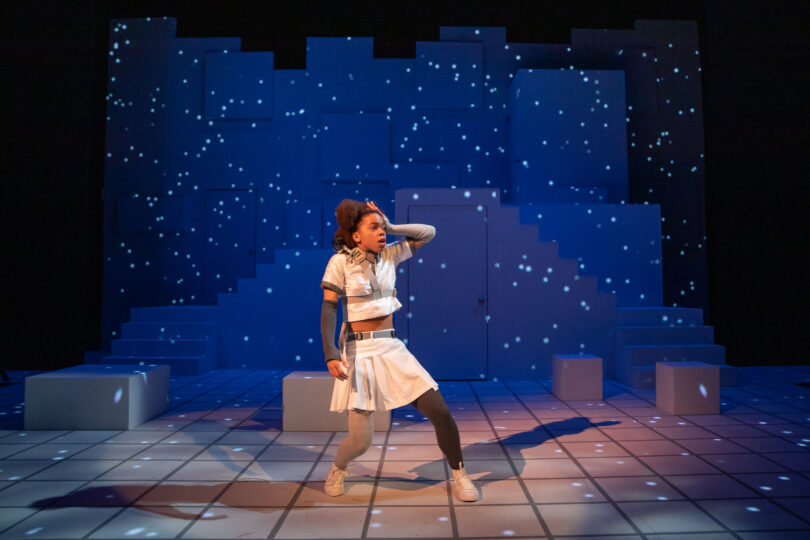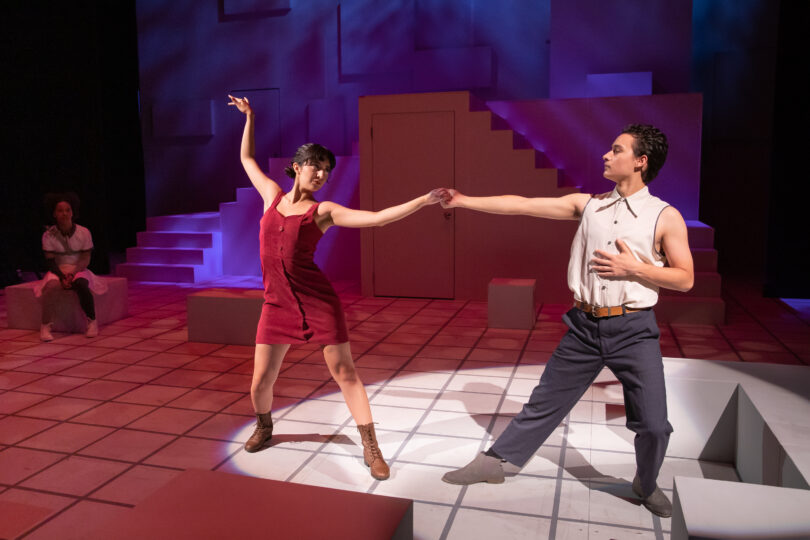Though Caryl Churchill’s Love and Information premiered nearly 10 years ago, the fluid nature of her play makes it just as relevant – and perhaps even more so – in today’s technologically expanding world. In transferring Churchill’s network of seemingly unrelated scenes to the Oscar G. Brockett Theatre, the production team has spent weeks devising, discussing and mobilizing her text. Director Mike Steele and dramaturg/movement director Molly Roy dig deeper, discussing the team’s interpretation of Churchill’s work and the movement, design and theatrical elements that bring lift to the technological underpinnings of the play.
Can you give us a brief description of Love and Information? What is the play about?
Mike Steele (Director): Love and Information is a difficult play to sum up. It is a play that has over 60 scenes, over 115 characters, and none of those characters come back. So once you see them and they leave the stage that’s [the] only time that you get with them. That said, even though there’s not narrative links between all of the scenes, there are thematic links and tethers throughout the night. All of these scenes are about people yearning: they’re people yearning to be known, and they’re people yearning to know more about the world around them and to know the people around them intimately. It’s about that struggle as we move forward into a world that is full of more and more stimulus – that is more and more fractured and multitudinous in the way that we experience life.

What themes are addressed in Love and Information? In what ways do you think these themes have particular relevance in today’s world?
Molly Roy (Dramaturg/Movement Director): On a core level, Love and Information is about what we know, how we know it and how we make meaning from it. The work explores disclosure and privacy, the fluidity of memory and the paradoxes of connection and isolation. Layered on top of these intimate dynamics are questions about the technologies, broadly speaking, that structure our interactions and information behaviors; how these technologies impact or magnify human desires, fears and impulses. These questions are particularly resonant right now as we contend with the wide-ranging effects of misinformation, the expansion of Web 3.0, the metaverse and an ongoing pandemic that has caused even more of our interpersonal exchanges to become digitally mediated.
How is the play structured? What challenges and exciting discoveries have developed out of this structure during the rehearsal process?

Mike Steele: The text itself, the way that it was written, has almost no stage directions and does not list which character says which line, so there’s a lot of openness and there’s a lot of room to play in the rehearsal room. We’ve made a lot of decisions over the course of the first two weeks of our rehearsal process, [addressing question like], “Who are these people? What exactly is happening? What is the event? What is the story we want to tell?” It’s given us a lot of room to personalize it. Each actor has room to bring their full selves to each role and bring their identity to each role and really make it about something that interests them.
What theatrical elements are you as a team using to weave together these vignettes?
Mike Steele: In designing the world of this play, we really wanted to make it an immersive experience for the audience, so all of our design focuses on creating what we’re calling an “immersive virtual museum” of life in the information age. Each scene in the play is like an artifact that this virtual museum is presenting to us.
Molly Roy: As the movement director, I have been thinking a lot about the increased blurring between on/off-line spaces and how this registers upon the body; how the technologies and devices we interface with on a daily basis influence our movements and contribute to a social choreography. We have also been exploring how, for example, gaming systems are trained to read the body in motion and the ways in which dance and movement vocabularies circulate across digital platforms and spaces.

What do you hope audiences experience when watching this production?
Mike Steele: We really hope that the audience is fully immersed in this world and feels like an active participant without ever leaving their seat. In the same way that when you’re at home you have the person next to you, you have the TV on, maybe there’s a radio in the background…there’s lots of things that you can choose to pay attention to. The same [thing is true] in this play – it operates like a collage where there’s many things that you can draw connections between.
Part of how you’re drawing connections as an audience member is creating your own personal story. So the story that one viewer comes out with at the end of the night is going to be slightly different from the story someone else comes out with at the end of the night, and that has to do with who they are and what they’re bringing into the space with them. We want that to be part of the experience.
Love and Information
April 13-24, 2022
Oscar G. Brockett Theatre
TICKETS

